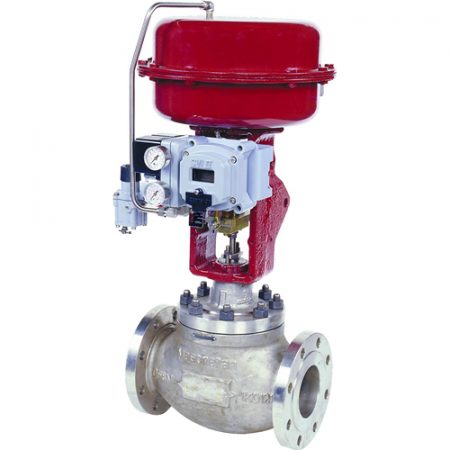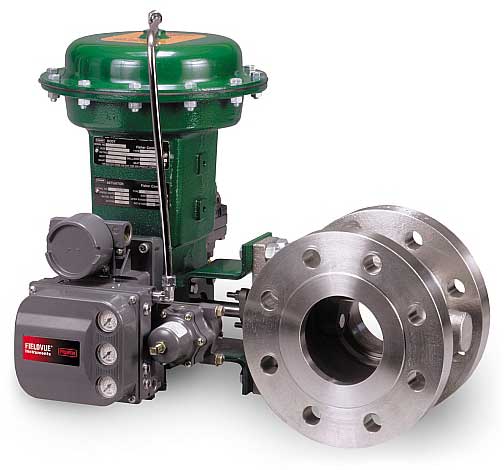Selecting the Right Control Valves: An Overview to Ideal System Efficiency
Selecting the Right Control Valves: An Overview to Ideal System Efficiency
Blog Article

Maximize Power Financial Savings and Comfort With Advanced Structure Automation Controls
In the realm of modern design and center management, the assimilation of innovative structure automation controls stands as an essential improvement. The convergence of modern technology and sustainability has actually birthed a new era where power effectiveness, comfort optimization, and functional streamlining are no longer distant goals but attainable truths. By taking advantage of the power of automation, buildings can adjust, react, and evolve in means that were when inconceivable. The potential for significant energy financial savings and improved convenience is not just an opportunity however a guarantee waiting to be fulfilled. This paradigm shift in structure management holds the key to opening a world where ecological conscientiousness and owner wellness harmoniously coexist within the wall surfaces of our frameworks.
Power Efficiency Perks
Power efficiency advantages can substantially decrease power usage and operational expenses in buildings. Energy-efficient systems, such as sophisticated structure automation controls, can optimize the use of sources like illumination, heating, and cooling, leading to lower power expenditures over time.
In addition, boosted power performance can lengthen the life-span of structure devices and systems. By operating much more efficiently, cooling and heating systems, lighting components, and various other structure parts experience much less damage, resulting in reduced maintenance and replacement costs. Additionally, energy-efficient structures commonly command greater building worths and rental prices, offering long-lasting economic advantages to owners.
Moreover, energy effectiveness can improve passenger convenience and efficiency. Effectively controlled interior environments with ideal lights and thermal conditions develop a more favorable and pleasant work space, resulting in boosted worker complete satisfaction and efficiency. In general, the power effectiveness benefits linked with sophisticated building automation controls are multifaceted, encompassing price financial savings, environmental stewardship, and owner health.
Enhanced Convenience Control
Enhancing comfort control in structure settings needs a sophisticated assimilation of sophisticated automation systems for optimal passenger well-being. By making use of sophisticated structure automation controls, centers can customize the indoor atmosphere to satisfy the specific requirements and choices of residents. These systems enable exact law of temperature level, ventilation, and lighting, creating a comfy and effective atmosphere. Resident contentment and performance are very closely connected to thermal convenience, making it important to have systems in position that can adapt to altering conditions in real-time.
Enhanced comfort control surpasses standard temperature changes. It consists of features such as personalized settings, tenancy sensing units, and all-natural light use to develop a receptive and dynamic atmosphere. By incorporating these sophisticated controls, buildings can not just improve convenience but additionally improve energy effectiveness by enhancing system procedures based upon real occupancy and use patterns. Inevitably, prioritizing occupant comfort with sophisticated automation systems results in a more enjoyable and much healthier interior atmosphere.
Functional Effectiveness Improvements

In addition, the application of real-time surveillance and analytics tools makes it possible for building drivers to recognize energy ineffectiveness and operational abnormalities quickly. By continually monitoring power use patterns and system efficiency metrics, modifications can be made in real-time to enhance energy usage see page and make certain peak operational effectiveness. control valves. In addition, including demand reaction methods right have a peek at this website into building automation controls can even more improve functional performance by dynamically adjusting energy usage based on grid conditions and rates signals
Indoor Environment Optimization
Efficient indoor environment optimization is a fundamental element of structure automation controls, guaranteeing residents' convenience and well-being while making the most of power cost savings. By making use of advanced sensors and controls, building automation systems can continuously adjust and check temperature, moisture levels, air high quality, and air flow to create an ideal indoor setting. Maintaining regular and comfy problems not only improves occupant contentment but likewise improves performance and general health.
Interior environment optimization likewise plays a critical duty in power efficiency. By fine-tuning air flow, heating, and cooling systems based upon real-time information and occupancy patterns, constructing automation controls can dramatically minimize energy intake - control valves. For example, carrying out methods such as demand-controlled ventilation and thermal zoning can aid decrease power waste while making sure that each location of the structure gets the required conditioning.

Lasting Atmosphere Development
Structure automation regulates not just enhance interior environment problems for energy efficiency and occupant convenience however likewise lay the foundation for creating a lasting atmosphere via calculated monitoring of sources and systems. By integrating innovative structure automation innovations, such as sensors, actuators, and smart software program, facilities can change and keep track of power usage in real-time to minimize waste and lower their carbon footprint. These systems enable anticipating maintenance, identifying possible issues prior to they intensify and optimizing devices performance to enhance durability and performance.
Moreover, lasting setting development expands beyond energy monitoring to include water preservation, waste reduction, and interior air high quality renovation. Building automation controls can manage water usage, spot leakages, and guarantee correct waste disposal practices, adding to general sustainability initiatives. Furthermore, by keeping track of and controlling air flow and purification systems, these modern technologies enhance passenger health and wellness and productivity while lowering power consumption connected with cooling and heating procedures.
Final Thought
In final thought, progressed structure automation controls offer substantial benefits in terms of power cost savings, comfort control, operational performance, interior environment optimization, and creating a sustainable environment. By applying these controls, buildings can achieve ideal efficiency while lowering energy intake and enhancing passenger convenience. It appears that making use of sophisticated automation technology is important in boosting structure efficiency and producing a much more sustainable future.
Energy efficiency benefits can substantially reduce energy intake and functional prices in buildings. Generally, the power efficiency advantages associated with advanced structure automation discover here controls are complex, incorporating price financial savings, environmental stewardship, and passenger well-being.
In addition, integrating demand response approaches right into structure automation controls can additionally enhance operational effectiveness by dynamically adjusting energy usage based on grid conditions and prices signals.
Structure automation regulates not only optimize interior environment problems for power performance and owner comfort yet also lay the foundation for producing a lasting atmosphere through calculated management of sources and systems.In final thought, advanced building automation controls deal substantial benefits in terms of energy cost savings, comfort control, operational efficiency, indoor environment optimization, and developing a lasting environment.
Report this page